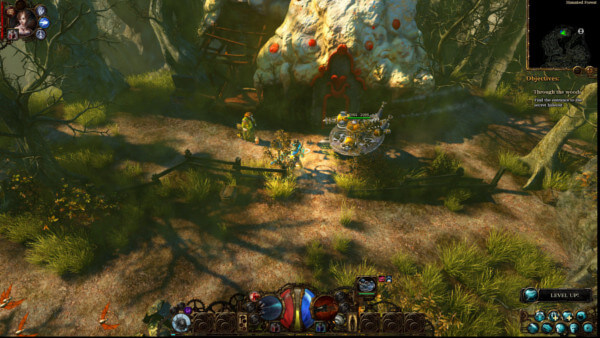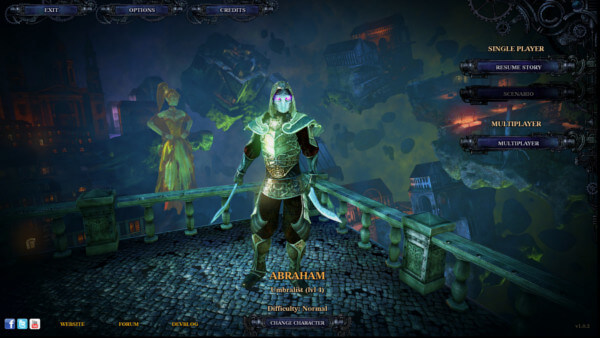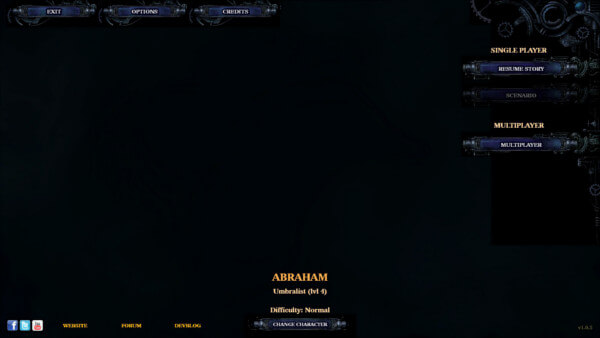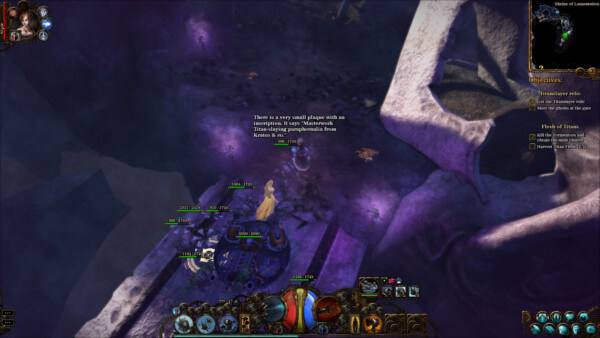If you’re going to discuss great efforts at Diablo-esque dungeon crawls, you’re going to talk about Torchlight and you’re going to talk about the Van Helsing titles. The first of these, The Incredible Adventures of Van Helsing, was a genuine surprise – an out-of-nowhere dungeon-crawling monster-slaying romp, and it distinguished itself with an excellent soundtrack, and a really neat Lovecraft-meets-Steampunk aesthetic. The second was more of the same but in a way that was easy-to-swallow – it didn’t reinvent the wheel because the wheel was more than good enough to pass muster. It simply added classes, combat options, and a little polish to a formula that already worked just fine. The Incredible Adventures of Van Helsing III, on the other hand, is an odd duck. Bewilderingly, it does try to reinvent the wheel; it attempts to fix a formula that wasn’t broken, and in so doing it significantly reduces the depth of the game-play, and mars the overall experience.

I’d like to get the positives out of the way – it’s a good-looking title, and it runs well. It possesses the same sense of humor as the previous incarnations of the franchise, and it certainly doesn’t take itself too seriously. There’s a lot of variety in the game-play – the classes are clearly distinguished from each other, and there’s a mix of dungeon-crawl, staff management, and tower defense, though not as much of the latter two as the former, and this is a rather large misstep. There’s a good bit of min-maxing to be done if you’re into that sort of thing, but Van Helsing III removes both the ranged vs. melee option from every class and reduces the complexity of the classes that were carried over from the previous titles.

And it’s not just the design choices that are questionable – the co-operational multi-player just doesn’t seem to work. Our practical test for the multi-player was a 3-person co-op match between Pixelated Geek’s PXLPlays! crew; as we’re all located quite close in a geographical sense, we are constantly testing titles that are in beta, early access, and other similar states somewhere short of completion. We have never once had issues with connectivity, ping, and net-code on this scale. Over the course of the match there were 3 separate fatal and game-breaking errors, and that was in less than an hour. The dungeon crawl genre is all about up-time vs. downtime – there’s a reason the genre has evolved in the direction of companions that sell gear so you don’t have to exit the title’s 30 seconds of fun. It’s the most Pavlovian of genres; point-and-click and get gear and get excited by getting gear so you that you want to point-and-click more so you can get more gear, and as such it’s almost certainly the genre in which lag, net-code errors, and game-play interruptions are the most damning. Anything that interrupts the experience pulls you away from the core principles of the very reason you’re playing a dungeon crawl in the first place.

The negatives aside, the technical aspects of the single-player are completely workmanlike if somewhat shy of spectacular – with the exception of some texture issues on load-in and one lone instance of glitching involving the rendering of foliage, the title performed admirably in the campaign, and this is for the best, because the length of the campaign is such that even the briefest of interruptions would have been a cardinal sin. I don’t expect dungeon crawls to be terrifically long, given the genre’s predilection towards replay value being dependent on multiple play-throughs and alternate modes, but Van Helsing III rolled in at approximately 6 hours. Furthermore, it lacks a great deal of the replay value of other titles, especially given the almost unplayable nature of the co-op, the lack of new-game-plus option, the confusingly low level-cap, and the rudimentary nature of the ‘custom campaigns.’

Additionally, there just isn’t that much in the way of variety to the environments or enemy types. Everything simply feels the same, the narrative plods along with all the grace and dignity of a dying man dragging himself across a desert, and before you know it you’re fighting a generic undead dragon boss with, you guessed it, three different forms, and the title is over. It’s a shame, because this is an interesting world, and there are a handful of really interesting characters that aren’t explored with any depth at all; Katarina’s exposition and arc in this title consists of about 15 lines of dialog over the course of about 45 minutes, and all of those 45 minutes are completely predictable, and a wasted opportunity.

It’s not all bad – the title still maintains an excellent art-style and sense of humor and even with the reduced depth, there’s still a lot of variety in the classes, and room for replay. But until the title can provide some sort of repeated value beyond one play-through per class, it’s really difficult to recommend The Incredible Adventures of Van Helsing III unless you’ve exhausted basically every other option.